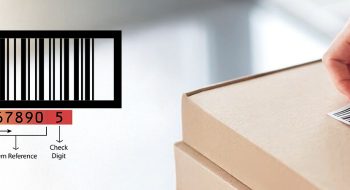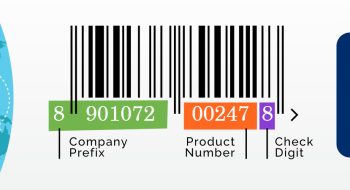What is Barcodes
Barcodes are a fundamental and ubiquitous element in modern commerce and logistics, crucially supporting the global economy. They serve as an efficient and reliable method for storing and retrieving information, thereby revolutionizing the way we track, manage, and sell products across various industries. This guide is all about the world of barcodes, exploring their diverse types, tracing their historical development, understanding how barcodes work and wide-ranging applications.
From retail shelves to complex supply chains, barcodes are the unsung heroes of modern technology, simplifying processes and enhancing efficiency in ways often taken for granted.
Types of Barcodes
Barcodes come in various formats, each designed for specific uses and industries. The diversity in barcode types reflects their wide applicability and the need to encode different kinds of information, from simple identification numbers to complex data. Understanding the different types of barcodes is crucial for selecting the right one for a specific application.
Here are some of the most common types of barcodes used worldwide, their unique features, and typical uses.
- UPC-A Barcode: This is a 1D linear barcode consisting of 12 digits. It is used for a wide range of retail products like groceries, electronics, and clothing. UPC-A barcodes are globally recognized and can also be used for packaging like cases and pallets. It is primarily used in the United States and Canada.
- EAN-13 Barcode: Similar to UPC-A, EAN-13 is a 1D linear barcode. It contains 13 digits and is commonly found on retail products. Despite its European roots, it’s recognized globally.
- GS1-128 Barcode: This barcode is used in logistics and general distribution. It differs from other linear barcodes by its ability to include additional product attributes like expiration dates, batch numbers, and weight. GS1-128 encodes GTIN or Serial Shipping Container Code (SSCC) and is crucial for logistic labels.
- UPC-E Barcode: A compact version of the UPC code, UPC-E is a 1D linear barcode used globally, mainly in the retail and grocery sectors for small items like candy and cosmetics.
- Data Matrix Barcode: This 2D barcode can encode a large amount of information in a small space. It’s used primarily in the healthcare sector. The GS1 Data Matrix is particularly notable for its error correction capabilities. It is not scanned at the point of sale.
- EAN-8 Barcode: A shorter version of the EAN-13, the EAN-8 barcode is used when packaging space is limited. It contains eight digits.
- ITF-14 Barcode: This barcode is used on larger packaging units like cases, typically in general distribution and logistics. ITF-14 is well-suited for printing on corrugated materials and is not scanned at the point of sale.
- QR Code: A popular 2D barcode that links to web content. QR codes can carry GS1 identifiers and data, making them useful for both consumer engagement and supply chain functions, like price lookup. GS1 Digital Link transforms these codes into web-friendly formats, enhancing consumer interaction while maintaining their supply chain utility. It is currently not scanned at the point of sale.
History of Barcodes
Early Developments
In the 1940s, Norman Joseph Woodland and Bernard Silver pioneered barcode technology inspired by Morse code. They patented the first barcode system in 1952, revolutionizing inventory management.
Evolution of Barcode Technology
Barcode technology evolved from simple linear patterns to complex 2D formats, driven by the need for more data storage and faster scanning. The 1970s saw the introduction of Universal Product Codes (UPC), transforming retail. Subsequent digital advancements led to the development of 2D barcodes and QR codes. GS1, an international organization, standardized barcode formats like UPC and EAN, enhancing their global use across various industries.
Components of a Barcode
Barcode Structure
A barcode involves a series of parallel lines and spaces that can vary in width and spacing. These variations are critical as they encode the specific information. Additionally, barcodes usually have a ‘quiet zone,’ which is a clear area without any marks or symbols, positioned before the first and after the last bar. This zone is essential for scanners to recognize the start and end of the barcode. Often, barcodes include a sequence of numbers below the lines and spaces, providing a human-readable form.
Barcode Encoding
Encoding in the context of barcodes refers to the method by which information (like a product number or an identifier) is translated into the barcode format. Different types of barcodes use various encoding schemes. The choice of encoding depends on the amount and type of data to be encoded, as well as the space available for the barcode.
Barcode Decoding
This is the reverse process of encoding. It’s performed by barcode scanners, which read and interpret the barcode’s encoded data. Scanners use light to read the barcode: Based on the amount of light reflected the information is decoded. Since the bars reflect less light than the spaces between them, the scanner can detect the pattern of light and dark regions and translate them back into the data that was originally encoded. This decoded information is then typically sent to a computer system for processing and use.
How do Barcodes Work?
Barcodes function as a visual, machine-readable representation of data, typically about the item to which they are attached.
Scanning and Reading Barcodes
The process of scanning and reading barcodes involves specialized devices known as barcode scanners. These scanners use a light source, a lens, and a light sensor to translate the optical impulses into electrical ones. The light emitted by the scanner illuminates the barcode, and the dark bars absorb light while the white spaces reflect it. This contrast creates a pattern that the scanner’s sensor detects and converts into an electrical signal. This signal is then processed and decoded by the scanner’s internal decoder, which interprets the barcode’s data based on the specific symbology (format) of the barcode. Finally, this decoded data is sent to a computer or other system, where it can be used for a variety of purposes, such as inventory management, point-of-sale transactions, or tracking items through a supply chain.
Barcode Applications
Barcodes have a wide range of applications in various industries, including retail, healthcare, logistics, and manufacturing. They are used to track inventory levels, manage supply chains, and ensure patient safety, among other things.
Advantages of Barcodes
Barcodes enhance data accuracy by reducing human error, speed up data entry processes, and are cost-effective. They also enable real-time inventory tracking, improve operational efficiency, and are versatile enough to be used in a wide range of industries.
Barcode Technologies
Barcode technology utilizes various encoding methods, such as linear or 2D formats, to represent data visually. Scanners interpret these codes, transforming them into digital information for inventory tracking, point-of-sale systems, and efficient data management across numerous industries.
1D Barcodes vs 2D Barcodes
1D barcodes, consisting of vertical lines, encode data in one dimension and are suited for simple, small data sets. In contrast, 2D barcodes or QR codes, store information in two dimensions, allowing for embedding URLs, thus much larger data capacity.
QR Codes and Data Matrix Barcodes
QR codes and Data Matrix barcodes are two-dimensional, high-density barcode formats capable of encoding large amounts of data, including text and URLs, in a small square or rectangular pattern readable by smartphones and dedicated scanners.
Emerging Barcode Technologies
The future of barcode technology includes enhancements in readability, data capacity, and integration with digital systems.
Industries Using Barcodes
Barcodes play a crucial role in various industries, enhancing efficiency and accuracy:
Retail and Inventory Management
In retail, barcodes simplify product tracking and inventory control. They enable quick scanning of items at checkout, facilitating faster transactions and accurate pricing. In inventory management, barcodes help in efficiently tracking stock levels, reducing errors, and improving order fulfillment processes.
Healthcare and Pharmaceutical
In healthcare, barcodes are vital for patient safety and operational efficiency. They ensure precise medication dispensing, track medical equipment, and manage patient records, significantly reducing errors in treatment and diagnosis. In pharmaceuticals, they aid in drug verification and inventory control.
Logistics and Supply Chain
Barcodes are indispensable in logistics and supply chain management. They enable the tracking of shipments from origin to destination, improve the accuracy of order fulfillment, and enhance the overall efficiency of supply chain operations. This real-time tracking ensures timely deliveries and helps in managing inventory across various locations.
Conclusion
Barcodes have become an indispensable tool in modern commerce and industry, offering a simple yet powerful method for data management and operational efficiency.
Frequently Asked Questions
1. What is the purpose of a barcode?
Barcodes efficiently store data in a machine-readable format, streamlining inventory management, tracking, and point-of-sale operations.
2. How are barcodes different from QR codes?
Barcodes are one-dimensional, storing data in lines; QR codes are two-dimensional, holding more information in a matrix format.
3. Are barcodes universal, or do they vary by country?
Barcodes follow universal standards but can vary in format and information content based on regional or industry requirements.
4. What information is stored in a barcode?
Barcodes typically encode data like product identification numbers, serial numbers, or inventory information, varying by the barcode type.
5. How do I choose the right type of barcode for my business?
Select based on data capacity, industry standards, and the specific tracking or inventory needs of your business.
6. What are the potential security risks associated with barcodes?
Barcodes can be duplicated or tampered with, posing risks in authenticity verification and secure data management.
7. What is the ISO standard for UPC?
The ISO standard for UPC (Universal Product Code) is governing its structure and print specifications.
8. Do barcodes have limitations in terms of data capacity?
Yes, traditional barcodes have limited data capacity, which is suitable for basic product information.
9. How can I troubleshoot barcode scanning issues?
Check barcode quality and scanner functionality and ensure the correct format and data encoding for effective troubleshooting.
10. What are the most promising developments in barcode technology for the future?
Future developments include enhanced data capacity, integration with blockchain for security, and improved readability under diverse conditions.









